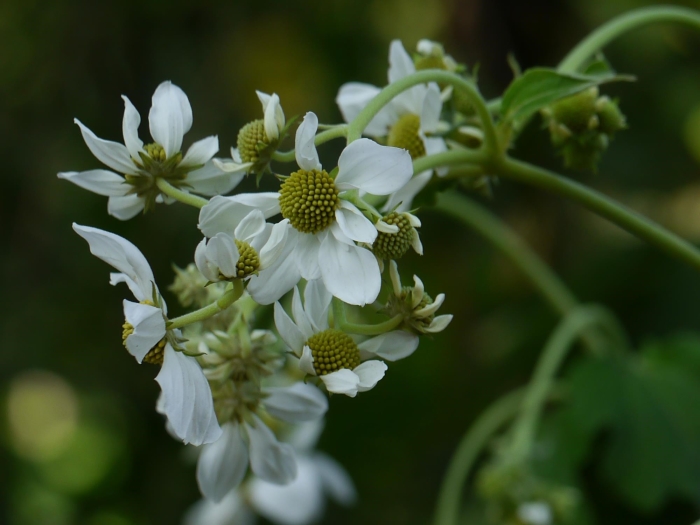Daisy Tree
(Montanoa grandiflora)
Daisy Tree (Montanoa grandiflora)
/
/

Dinesh Valke
CC BY-SA 2.0
Image By:
Dinesh Valke
Recorded By:
Copyright:
CC BY-SA 2.0
Copyright Notice:
Photo by: Dinesh Valke | License Type: CC BY-SA 2.0 | License URL: https://creativecommons.org/licenses/by/2.0/ | Uploader: Dinesh Valke | Publisher: Flickr |
























Estimated Native Range
Summary
Montanoa grandiflora, commonly known as Daisy Tree, is an evergreen shrub native to the cloud forests and high-altitude regions of Mexico. It can reach a height and width of 8-12 feet (2.4-3.7 meters), presenting a dense, rounded form. The Daisy Tree is notable for its aromatic, daisy-like white flowers with yellow centers that bloom profusely in the fall and winter, creating a striking display. The flowers are often followed by small, inconspicuous fruits.
Montanoa grandiflora is valued for its extended flowering season and its ability to attract pollinators such as bees and butterflies. It is used in cultivation for ornamental purposes, often as a border planting or as a privacy screen due to its dense foliage. This shrub is adaptable to a range of soil types, provided they have good drainage, and it tolerates both full sun and part shade. While it has low water requirements once established, regular watering will encourage more lush growth and flowering. It is generally pest-free but can be susceptible to root rot if overwatered or planted in poorly drained soils. Montanoa grandiflora is not known to be invasive outside its native range but should be monitored as with any non-native species.CC BY-SA 4.0
Montanoa grandiflora is valued for its extended flowering season and its ability to attract pollinators such as bees and butterflies. It is used in cultivation for ornamental purposes, often as a border planting or as a privacy screen due to its dense foliage. This shrub is adaptable to a range of soil types, provided they have good drainage, and it tolerates both full sun and part shade. While it has low water requirements once established, regular watering will encourage more lush growth and flowering. It is generally pest-free but can be susceptible to root rot if overwatered or planted in poorly drained soils. Montanoa grandiflora is not known to be invasive outside its native range but should be monitored as with any non-native species.CC BY-SA 4.0
Plant Description
- Plant Type: Shrub
- Height: 8-12 feet
- Width: 8-12 feet
- Growth Rate: Moderate
- Flower Color: White, Yellow
- Flowering Season: Fall, Winter
- Leaf Retention: Evergreen
Growth Requirements
- Sun: Full Sun, Part Shade
- Water: Low, Medium
- Drainage: Medium
Common Uses
Bee Garden, Border Plant, Butterfly Garden, Low Maintenance, Showy Flowers
Natural Habitat
Cloud forests and high-altitude regions of Mexico
Other Names
Common Names: Tree Daisy, Teresita
Scientific Names: , Montanoa grandiflora, Eriocoma grandiflora, Eriocoma hartwegiana, Priestleya longifolia,
GBIF Accepted Name: Montanoa grandiflora (DC.) Hemsl.